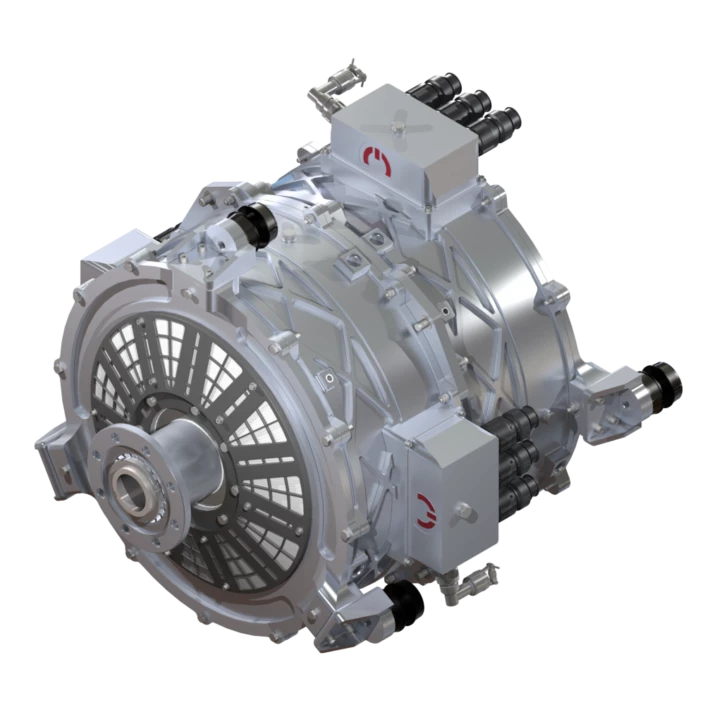Driven by advances in propulsion technology and the lofty ambitions of aircraft builders around the world, electric aviation is becoming an increasingly viable part of our transport future. With a few notable customers already under its belt, MagniX stands to play a real role in these formative stages, and has just given its high-power electric motor its first real working over.
Developing electrical propulsion to the sort of levels that could power electric aircraft is a tricky undertaking. Weight is a key consideration and directly relates to how far an electric aircraft can travel. As such, MagniX has developed a motor that does without standard components like cooling equipment and a speed reduction gearbox, enabling it to travel light.
Instead, its magni500 motor uses a closed-loop liquid cooling system and turns at 1,900 rpm, which CEO Roei Ganzarski says allows for direct drive to the propellor. The motor delivers 750 hp (560 kW) and more than 2,800 Nm (2,065 lb-ft) of torque.

And its work so far has been impressive enough to secure some key clientele. Israeli startup Eviation created quite a buzz at this year’s Paris Air Show with its nine-seat electric aircraft called Alice, which will be powered by three of Magnix's magni250 motors. Cape Air, the largest independent regional airline in the US, has committed to buying an unspecified number of Alice planes.
Additionally, back in March Canada’s Harbour Air, which is North America’s largest seaplane airline and carries around 400,000 passengers per year, pledged to become the world’s first all-electric airline, which will involve retrofitting its existing aircraft with MagniX’s electric engines.
All will be keeping a keen eye on the company’s progress as it edges towards these real world deployments of its magni500 motor. Billed as a significant milestone, the MagniX team has now successfully tested the motor by having it turn an aircraft propellor at full power, while also controlling the propellor pitch. This, the company says, makes the magni500 the world's most powerful electric aircraft motor to have turned a propellor at full power.
The exercise was carried out with the motor built into an Iron Bird test rig, a standard framework for these kinds of tests that allows aircraft builders to install major components to see how everything works in concert. Ganzarski says this represented the entire MagniX system as it would be installed on a proper aircraft.
“This could be a Beaver, Caravan, Otter and others,” he tells New Atlas.”The iron testing allows us to ensure that the propulsion system operates as it should as part of a larger system and can in fact turn, operate, and control that actual propeller that will be on the aircraft.”
This testing is a key step in the company’s progress as it eyes its first test flights, which will involve a retrofitted Harbour Air Beaver seaplane. The company says the timing around this is still “in flux” but the major hurdles have now been cleared.
“In terms of technical challenges, they have all been solved now that we have gone through the Iron Bird testing,” says Ganzarski. “Now it is about integrating everything into the aircraft.”
A video of the Iron Bird testing can be seen below.
Source: Magnix
Update (October 10, 2019): A company spokesperson has since confirmed that test flights of the Harbour Air Beaver seaplane will take place later this year, and clarified that Eviation's Alice electric plane will be powered by three magnix250 motors, not one magnix500 as originally reported.





